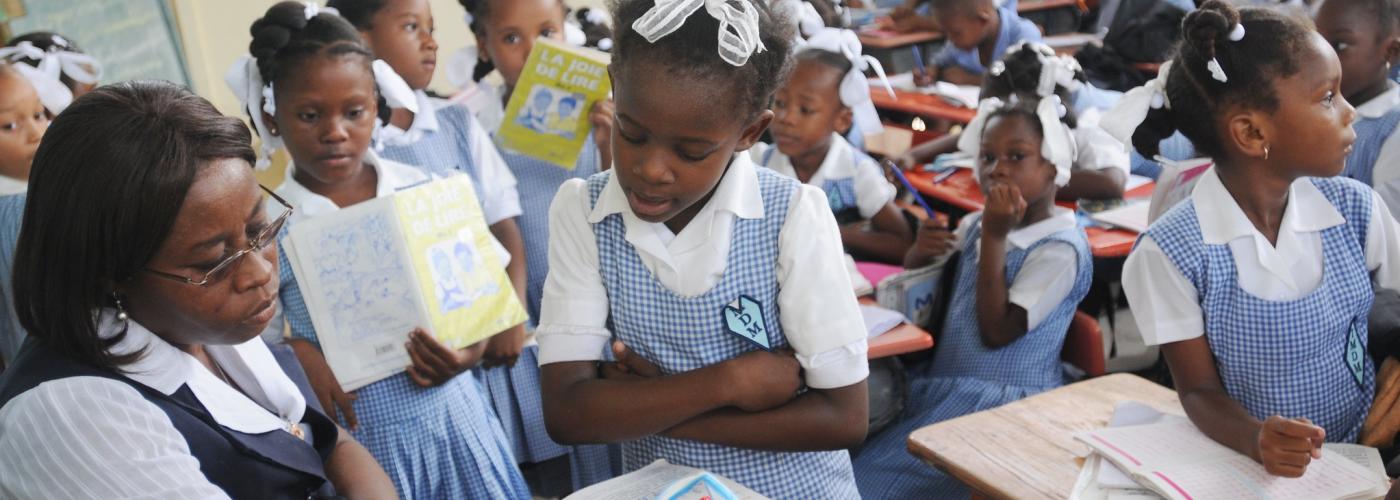Questions & Answers with Innovators: A Market Systems Approach to Child Care and Education to Achieve Sustainability
Image

Sub-Saharan Africa has the lowest levels of access to education and learning outcomes in the world, according to the Business of Education in Africa report. Taking into account a tremendous financing gap that has only grown since the COVID-19 pandemic started, viable solutions to address this gap through expanded public and private investment are urgently needed.
The USAID CATALYZE EduFinance program develops private sector partnerships to facilitate innovations in financing and service delivery that increase access to quality education at a low-cost. CATALYZE EduFinance takes a market systems approach, recognizing that in most low-income countries the lack of financing is largely due to a gap in the education finance ecosystem. By applying the 5-point Financing System diagnostic tool, relevant information is collected to design sustainable activities that mobilize blended finance for non-state schools and enterprises in USAID partner countries.
Launched in October 2019, CATALYZE EduFinance is managed by Palladium across 12 countries. In 2020, Kaizenvest, a partner organization, managed an activity in South Africa (SA) to increase private finance for early childhood development (ECD) centers serving low- and lower-middle income families.
Suezan: Can you describe how you incorporated a market systems approach, namely the findings from the 5-Point Financing Framework, into the design of the activity?
Nirav Khambhati, Managing Partner, Kaizenvest : The highlights for the findings from the diagnostic tool were: first, when we looked at the demand-side, only half of South African children today are accessing ECD facilities. With increasing prosperity, we believed that more families would want ECD services. This is not just because ECD is important but also because more women are working and need safe childcare facilities. Second, the government wasn’t in a position to create these facilities on its own because of budget constraints, and realized the private sector needed to manage and operate these facilities. Therefore, private sector engagement is very important. Third, we looked at the enabling ecosystem. In terms of financial inclusion, South Africa is one of the most advanced countries in Sub-Saharan Africa, given the number of financial institutions and those who have access to bank accounts. Yet, we could not find any financial institutions offering education financing products to institutions, particularly early child care providers. Our theory of change included capacity building for these financial institutions to lend in a responsible and successful manner to early childcare providers. These topline findings informed our market entry approach into South Africa.
Suezan: What are the goals and objectives of this partnership?
Nirav: In the short and medium-term, we aim to mobilize private capital to the early childhood sector writ large, and particularly to ECD providers in the form of loans. These providers need financing to expand and improve their educational services and provide greater access to education. As finance experts, a key piece of our contribution is to create vehicles for affordable capital to reach ECD providers. Another objective is to create an awareness of quality education practices through the reward and recognition mechanism and the assessment, which measures baseline and endline learning outcomes. This data helps ECD operators and parents better understand the quality of services offered and monitor their children's education.
The long-term goals are to: (1) increase fiscal accountability and financial independence in the early childhood development sector so that it can thrive and flourish, even with minimal amounts of government and/or philanthropic support, and (2) to galvanize the education finance ecosystem to offer access to affordable credit to education institutions in South Africa. This could create a thriving asset class that more financial intermediaries become aware of and engage with, in order to meaningfully supplement and complement government resources.
Suezan: What is Kaizenvest’s education financing model?
Nirav: There are three critical components of our model. First, affordable and responsible credit facilities, which provide loans to education entrepreneurs. Second, assistance building connections to the wider ECD ecosystem. For example, when operators want support for quality improvements for teacher training, leadership development services, pedagogy improvements, or curriculum improvements, we help ECD operators identify those services locally. We let entrepreneurs decide what quality investments they believe are needed, and we partner with them by connecting the entrepreneurs with service providers. We believe entrepreneurs know the realities on the ground, and are best positioned to seek the appropriate services. Third is the rewards and recognition mechanism. We have seen many examples where small financial rewards and non-financial recognition went a long way toward encouraging and motivating entrepreneurs to focus on learning outcomes. During the tenure of the loan, we conduct baseline and endline quality assessments. If there is a significant improvement in performance, the entrepreneur is eligible for an interest rebate or, in many cases, loan principal forgiveness.
Suezan: What types of unique opportunities are there to translate this model to South Africa?
Ryan Harrison, Project Director, South Africa Kaizenvest: Very few people recognize the sheer size of the ECD sector in South Africa partly because entrepreneurs are very small institutions and the sector is fragmented. Moreover, they are not well documented. There are estimates, but there hasn’t been an official registration process. Recently, the Department of Basic Education has taken ECD under its management, and their leadership is bringing greater transparency to this sector. The government estimates there are about 50,000-70,000 ECD operators, and the vast majority are privately owned. There is a huge opportunity for this activity to spotlight how sustainable financing mechanisms can improve the quality of education. That is why this is such an exciting activity in South Africa.
This post is authored by Dr. Suezan Lee, Sr. Education Finance Specialist, Center for Education, USAID Development, Democracy and Innovation Bureau, and Nirav Khambhati, Managing Partner, Kaizenvest and Ryan Harrison, Project Director, South Africa Kaizenvest.

